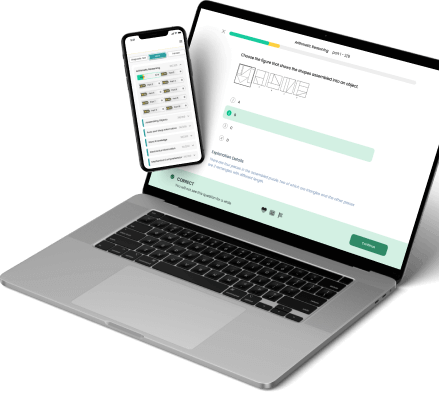Fun & effective NCLEX RN practice test tool to pass with flying colors
All-in-one platform with everything you need to ace the NCLEX RN on your first attempt
Clear and Thorough Learning Path
Proven NCLEXRN 3-step Practice Formula
After our 100,000+ users' success stories, we developed a 3-step strategy to provide you with the most precise and in-depth learning path while minimizing your prep time.NCLEX RN Diagnostic Test
First, take this short test and get your detailed report showing your strong and weak areas. Save your time by concentrating on what is in demand.Learning
With quick, bite-sized learning techniques and a detailed study guide for each NCLEX RN section, you can really strengthen your weaknesses (from step 1) and boost your scores.NCLEX RN Full Test
The last step for your preparation is taking our full NCLEX RN practice tests and seeing how far you've come since the beginning. Repeat the 3-step formula until you are satisfied with your results!Ready to start?
Thousands of NCLEX RN users already accomplished their goals.NOW it’s your turn!

What You Get
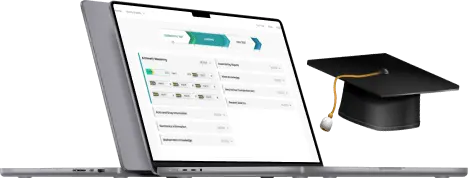
All-in-one platform
A complete NCLEX RN Prep Platform, including a diagnostic test, detailed study guides for all topics, practice questions with step-by-step explanations, and various full simulator tests.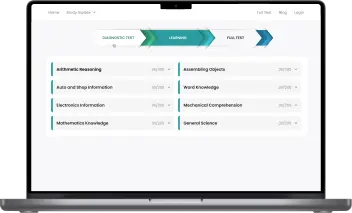
Questions nearly identical to those in the real NCLEX RN test
All questions are categorized into the specific sections as on the real NCLEX RN: Same format & same difficulty!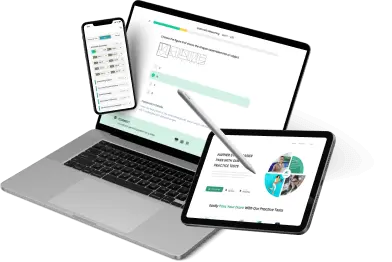
Best for the busy
Easily & quickly grasp all the knowledge with our unique learning technique. And you can learn anytime, anywhere on any devices, even with a few free minutes.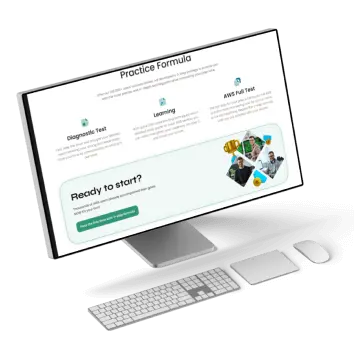
Practice while having fun
Learn and play! Complete round-by-round to reach your daily achievement and make progress on your learning journey!Featured on















What our users are saying
Over 50,000 aspiring American candidates use NCLEX RN monthlyFree NCLEX RN Practice Questions 2024
Firstly, you should first grasp all the basic information about the NCLEX test and its testing procedure before learning how and why you need to study with the NCLEX Sample Practice Questions.
What is the NCLEX-RN Exam?
The NCLEX exam is the more popular name for the National Council Licensure Examination. Once a student has completed nursing school, they must take this test in order to obtain a nursing license in the United States and Canada. The NCLEX-PN and NCLEX-RN are the two variants of this nursing examination.
To get your registered nursing license, generally known as the RN License, you must pass the NCLEX-RN. The NCLEX-PN is used to certify candidates for licensure as vocational or practical nurses, generally known as LPNs.
The NCLEX exams are administered in CAT—computerized adaptive testing—format. As you provide accurate responses, the test adjusts to your ability and asks more challenging questions. With fewer questions, this kind of test can determine your proficiency more rapidly. Additionally, it lessens the benefit of guessing. There are additional question kinds available with the CAT format. They also offer alternative item formats in addition to the standard multiple-choice style. These comprise multiple response, ordered response, hot spots, and fill-in-the-blank calculations.
There are between 75 and 265 questions on the NCLEX-RN. The test will end after 75 questions, regardless of how well or poorly you are doing, and you will be awarded your score. The machine will ask you up to 265 questions in total as it assesses your general skills and knowledge.
Time limit: Total testing time allowed is 6 hours, which contains all breaks and the tutorial and sample questions at the beginning. All breaks are optional in NCLEX-RN Exam.
NCLEX-RN exam format
Multiple-choice is the most of the test items, but there are some other types, such as:
- multiple-choice with more than one answer
- fill-in-the-blank calculation
- ordered response
- hot spots (you must “click” on a place on the screen to answer)
NCLEX RN Test Questions
75 is the minimum number of questions and 265 is the maximum. Among this, 15 of them are experimental questions that do not count toward the score, but you will not know which ones these are.
Each of our NCLEX practice exams covers every subject. Pick a category from the listing to narrow your focus to a particular subject. Start preparing for the NCLEX right away with our free NCLEX practice questions!
NCLEX Test Passing Score:
The NCLEX-RN exam is scored using a unique system. Instead of receiving a point value that reflects either the number of correct answers or the average difficulty level of questions you answered, the score here will be a hundred in “logits.”
A logit is a unit of measurement that implies the relative difference between your estimated ability level (relied on your level of education, training, and experience) and your ability level (relied on how you performed on the test). The board sets up a revised passing standard every three years. At this test, you will need a logit of 0.00 or better.
This “logit” is being changed based on each question that you answer is the reason why there is such a wide range in the number of questions you’ll answer on the test. If you reach the minimum of 75 questions and the computer program is able to decide with 95% accuracy that you have either passed or failed, the test will end there.
If you achieve the maximum, a final evaluation will be performed to see if you have achieved the required standard. The more questions you have to answer, the better you perform, however that can all sound a little confusing. But even if you have to respond to 265 questions, you still might ace the test. If you have achieved the required criteria, you will simply be told that the test was a success. If you failed the test, you would only read a thorough summary of how you did on each component.
Improve4 your scores with our NCLEX Practice Questions right now!
NCLEX-RN Cost
The cost for taking the NCLEX RN Test is $200.00
What is on the NCLEX-RN Exam?
Management of Care
Management of Care accounts for 17-23% of the exam. Some of the nursing actions contained in this subcategory are Advanced Directives, Advocacy, Case Management, Client Rights, Concepts of Management, Confidentiality, Continuity of Care, Quality Improvement, Delegation, Establishing Priorities, Ethical Practice, Informed Consent, Legal Responsibilities, Referrals, and Supervision.
Safe and effective care environment
Safety and Infection Control accounts for 9-15%. Nursing actions consist of Accident Prevention, Error Prevention, Hazardous Materials, Surgical Asepsis, Standard Precautions, and Use of Restraints.
Health promotion and maintenance
The second category is Health Promotion and Maintenance. These questions account for 6-12%. Nursing actions tested consist of the Aging Process, Ante/Intra/Postpartum and Newborn Care, Developmental Stages and Transitions, Disease Prevention, Health Screening, Lifestyle Choices, Physical Assessment Techniques, Health Promotion Programs, High-Risk Behaviors, and Self-Care.
Psychosocial integrity
The third category is Psychosocial Integrity. It accounts for 6-12% of the exam and tested nursing actions consist of Coping Mechanisms, Grief and Loss, Mental Health Concepts, Spiritual Influence on Health, Sensory/Perceptual Alterations, Stress Management, Support Systems, Therapeutic Communication, Chemical Dependency, Behavioral Interventions, Crisis Intervention, Coping Mechanisms, End of Life Care, and Family Dynamics.
It's crucial to understand that you cannot skip questions and come back to them. To continue on to the next question, you must respond to the previous one. To discover the best response even when you're not quite confident about the question, you must focus on techniques throughout some of your study time.
Physiological integrity
The last category includes four concepts:
Basic Care and Comfort account for 6-12% on the NCLEX-RN exam. Nursing actions consist of this subcategory are Assistive Devices, Elimination, Mobility, Nonpharmacological Comfort Interventions, Nutrition, and Oral Hydration, Personal Hygiene, as well as Rest and Sleep.
Pharmacological and Parenteral Therapies accounts for 12-18%. Tested nursing actions consist of Adverse Effects, Contraindications, Blood and Blood Products, Central Venous Access Devices, Chemotherapy, Expected Effects, Intravenous Therapy, Medication Administration, Pharmacological Pain Management, Total Parenteral Nutrition, and Dosage Calculation.
Reduction of Risk Potential accounts for 9-15%. Its tested nursing actions consist of Diagnostic Tests, Laboratory Values, Potential for Complications from Surgical Procedures and Health Alterations, as well as Therapeutic Procedures.
Physiological Adaptation accounts for 11-17%. Its tested nursing actions consist of Alterations in the Body Systems, Fluid and Electrolyte Imbalances, Hemodynamics, Medical Emergencies, Pathophysiology, and Unexpected Response to Therapies.
What to bring?
Your Authorization to Test (ATT).
One form of signed identification consists of a picture. If you have altered your hair color, lost weight, or grown a beard, have a new picture ID made before the test day. The name on your ID must exactly fit the name on your ATT. Acceptable forms of identification consist of driver’s license, state/province identification, passport, and U.S. military ID.
What not to bring?
Do not bring any personal belongings
Do not bring any study materials to the test center
NCLEX Exam Tips and tricks
Always focus on the patient
Correct answers acknowledge their feelings, take into account their preference, or offer them a selection when possible.
Pick the “umbrella” answer
Is there a comprehensive answer that seems to have several correct answers under it? Maybe it’s the correct answer.
Watch for “global” words
Anything that makes you have to do something without any exception (always, never, only, every, must) is typically incorrect.
Stop worrying about the previous question
Don’t worry if you select the first answer for the last four questions. The test is randomized, so if you feel the answer is correct, choose it.
Live in an ideal world
Each question expects you to have a full staff and unlimited time to dedicate to each patient. Don’t remove an answer because it doesn’t seem “realistic” or “real life.”
Remember your ABCs
When mentioning priority (and there is a lot of priority on the NCLEX) remember- Airway, Breathing, Circulation, in that order. If those problems are taken care of, you can move on to addressing safety, pain, education, and the patient’s feelings.
Know your labs
Most of the time memorization isn’t super useful for the NCLEX, but lab values are an exception. You will not be given a range of normal and abnormal labs, so you must know the ins and outs of low, normal, and high values, unlike the clinical setting.
Remember your nursing interventions
Before you act, do you need more information? Notice: assessment, planning, then intervention.
Know your meds
Medication safety is large on the NCLEX because it’s huge in the career of a nurse. You will likely see a lot of medications you don’t know, so be sure to learn common prefixes, roots, and suffixes. If you have no idea what the medication is, look to the patient’s diagnosis for clues about what the drug should be doing for the patient.
Don’t pass the buck
Commonly the answer that tells you to call the doctor/therapist/someone else is wrong. The test is assessing what YOU would do, not how you would delegate. Calling the doctor can be the best option down the road, but there is usually another intervention you should perform first.
NCLEX Practice Questions Study Guide
There is a section on many sample NCLEX practice questions that outlines the possible answers. It can be alluring to read the explanation and assume that you now fully comprehend it. The majority of the time, an explanation, however, only briefly discusses the larger background of the inquiry. Even if the explanation appears clear-cut, go over it once again, and then carefully consider each concept associated with the subject until you are confident that you understand it.
Exercise with NCLEX sample questions is exactly that—practice, so bear that in mind as you continue. It is doubtful that any of the exact questions from this test will appear on the actual one, therefore memorization of the questions and answers won't be particularly helpful.
You won't be ready for the actual exam if all you know are the correct answers to the practice questions. You will be able to answer any question on the NCLEX test if you thoroughly comprehend the subjects by studying them.
NCLEX - RN FAQs
How many questions are on the Nclex-RN 2024?
75 - 265 questions. Among this, 15 of them are experimental questions that do not count toward the score, but you will not know which ones these are.
What score do you need to pass Nclex-RN?
The NCLEX-RN is scored using a rather unique system. Rather than receiving a point value that reflects either the number of correct answers or the average difficulty level of questions you answered, the score here will be measured in “logits.” At this test, you will need a logit of 0.00 or better.
Is the Nclex really that hard?
In 2017, according to the National Council of State Boards of Nursing, 2017, the first-attempt NCLEX pass rate for U.S. -educated nursing students was 87%. 45.56 was the second-attempt pass rate for domestically-educated students taking the test. These results imply that it is a pretty difficult test. The questions are designed to test your main thinking, knowledge of the nursing process, and assessment skills.
What are good signs you passed Nclex?
Notice that the last question you took on the test and look it up to see if you got the right answer. If you were correct, you have chances that you passed.
What are the signs you failed the Nclex?
If the computer shuts off when you were at question 85 or even 76, this is a sign you didn’t pass the exam. Your test will only continue if you’ve reached the minimum passing standard; so it won’t immediately shut off if you’ve dipped below the pass rate. This is a sign that you’ve already reached the minimum levels required to pass.
Don't hesitate to learn with NCLEX practice questions on our website and mobile app right now. Standing at the top with even hundreds of thousands of visits and application downloads, we are confident to position ourselves as the leading unit providing users with the most effective learning facilities. Our NCLEX sample practice questions not only give users the most in-depth knowledge but also help them pass the exam easily, and achieve their goals.






